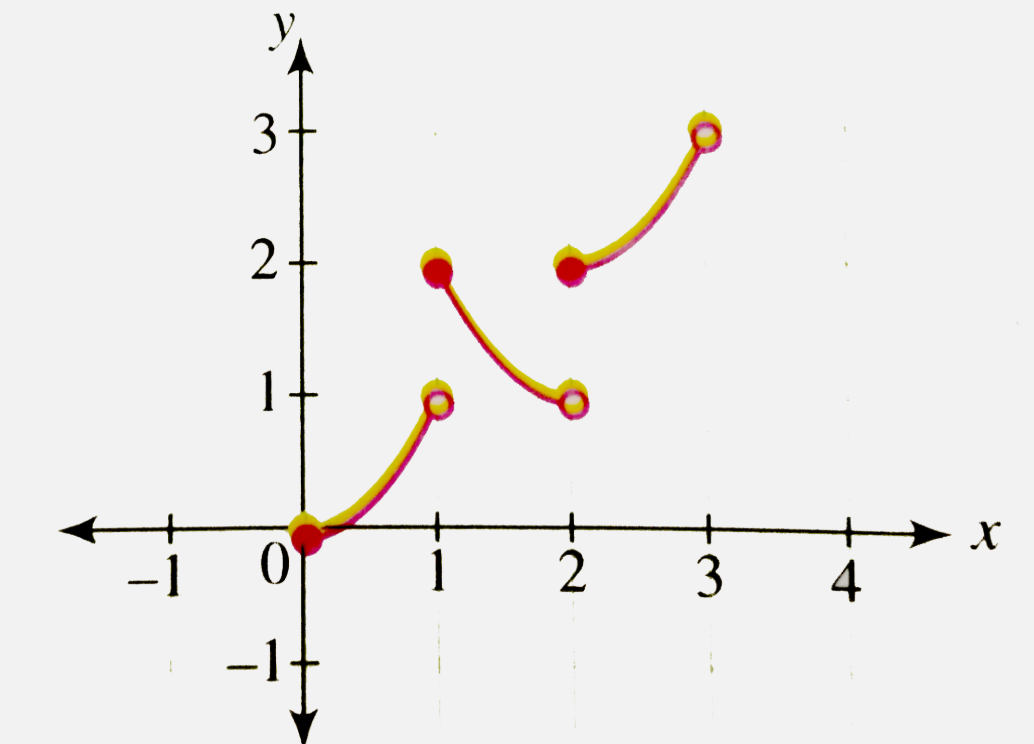Which of the following functions has (have) y-symmetry or origin symmetry?
(i) f(x)=x2sinx (ii)f(x)=log(x+√1+x2)
(iii)f(x)=ex+e−x2 (iv)f(x)={0, If x is rational 1, If x is irrationalSolution in Tamil
(i) f(x)=(−x)2sin(−x)=−x2sinx=−f(x), hence function has origin symmetry
(ii) f(−x)=log(−x+√1+(−x)2)
=log⎛⎜
⎜⎝(−x+√1+x2)(x+√1+x2)(x+√1+x2)⎞⎟
⎟⎠
=log(1x+√1+x2)
=−log(x+√1+x2)
=- f(x), hence function has origin symmetry.
(iii) f(−x)=e−x+e−(−x)2=e−x+ex2=f(x),hence function has y-symmetry.
(iv) f(x)={0, If x is rational1, If x is irrational
⇒f(−x)={0, If -x is rational1, If -x is irrational
={0, If x is rational1, If x is irrational
= f(x)
Hence functions has y-symmetry.
Topper's Solved these Questions
- GETTING STARTED WITH GRAPHSBOOK - CENGAGECHAPTER - GETTING STARTED WITH GRAPHSEXERCISE - Exercise
18 Videos
- FUNCTIONSBOOK - CENGAGECHAPTER - FUNCTIONSEXERCISE - Question Bank
21 Videos
- GRAPH OF INVERSE TRIGONOMETRIC FUNCTIONSBOOK - CENGAGECHAPTER - GRAPH OF INVERSE TRIGONOMETRIC FUNCTIONSEXERCISE - Exercise
18 Videos
Similar Questions
Does the following graph pass the vertical or horizontal line test ?

View SolutionIf there are four distinct real numbers satisfying thẻ equation ∣∣x2−4x−7∣∣=n, then number of integers in the range of n is
View SolutionDraw the graph of y=tan−1x+cot−1x
View SolutionWhich of the following function is (are) even, odd, or neither? f(x)=x2sinx f(x)=√1+x+x2−√1−x+x2 f(x)=log(1−x1+x) f(x)=log(x+√1+x2) f(x)=sinx−cosx f(x)=ex+e−x2
View SolutionRange of the function f(x)=cos((ln(x^(2)+e))/(x^(2)+1))+sin(((ln(x^(2)+e))/(x^(2)+1))
View SolutionWhich of the following functions has (have) y-symmetry or origin symmetry?
(i) f(x)=x2sinx (ii)f(x)=log(x+√1+x2)
(iii)f(x)=ex+e−x2 (iv)f(x)={0, If x is rational 1, If x is irrational
View SolutionWhich of the following functions has (have) y-symmetry or origin symmetry?
(i) f(x)=x2sinx (ii)f(x)=log(1−x1+x)
(iii)f(x)=xex−1+x2+1
View Solutionमाना f:R+→R इस प्रकार परिभाषित है कि f(x)=logex⋅ निम्नलिखित प्रत्येक को ज्ञात कीजिए-
(i) f का परिसर
(ii) {x : f(x) = -2}
(iii) क्या f(xy) = f(x) + f(y) सत्य है?
View SolutionIf f(x) is a real valued function, then which of the following is injective function ?
(i) f(x)=x5 (ii) f(x)=x+sinx
(iii) f(x)=x2 (iv) f(x)=ex
(v) f(x)=x3+x2+4x+4
View SolutionWhich of the following function is (are) even, odd, or neither? (a). f(x)=x2sinx (b). f(x)=log(1−x1+x) (c). f(x)=log(x+√1+x2) (d). f(x)=ex+e−x2
View SolutionCheck whether the function has (have) y-symmetry or origin symmetry: f(x)=x2sinx.
View SolutionDetermine whether the function has y-symmetry or origin symmetry : f(x)=xex−1+x2+1
View SolutionFind the domains of definaton of the following functions:
(a) f(x)=√x−1+√6−x
(b) f(x)=√x2−x−2+1√3+2x−x2
(c) f(x)=x√(x2−x−2)
(d) f(x)=√sinx−1
(e) f(x)=√log5x−x24,
(f) f(x)=logx5,
(g) f(x)=logx2−5x+6x2+4x+6
(h) f(x)=arcsinx−32−log(4−x)
(i) f(x)=1log(1−x)+√x+2,
(j) f(x)=logcosx,
(k)f(x)=arccos34+2sinx
(l) y=1√|x|−x
View SolutionIf f(x) is a real valued function, then which of the following is injective function ?
(i) f(x)=x5 (ii) f(x)=x+sinx
(iii) f(x)=x2 (iv) f(x)=ex
(v) f(x)=x3+x2+4x+4
View SolutionLet a function f:R+→R is defined as f(x)=logex, then find each of the following:
(i) Range of f
(ii) f(x)=-2
(iii) Is f(xy)=f(x)+f(y) true ?
View Solution
